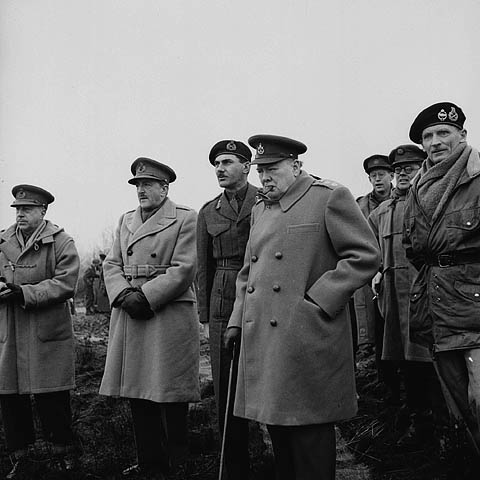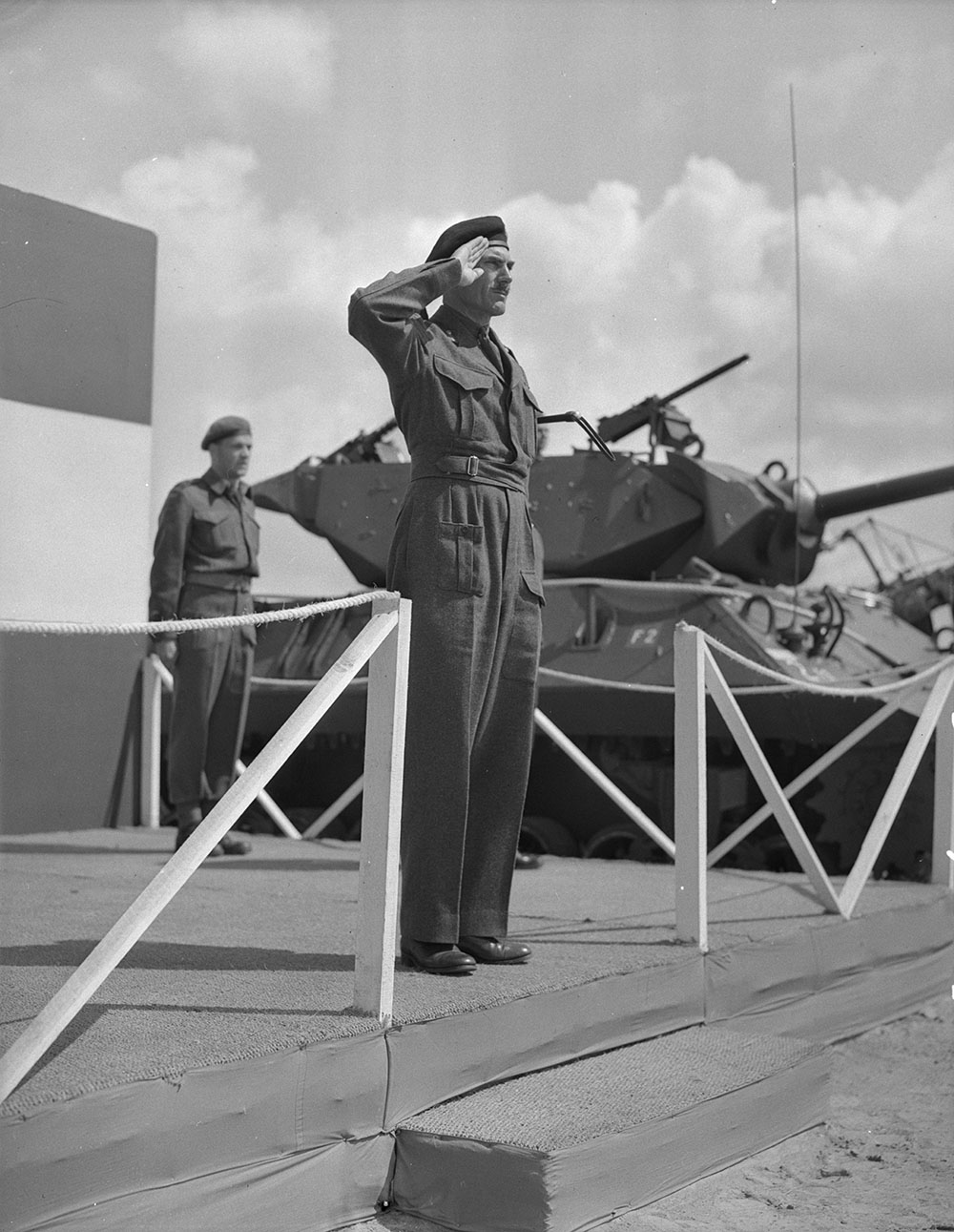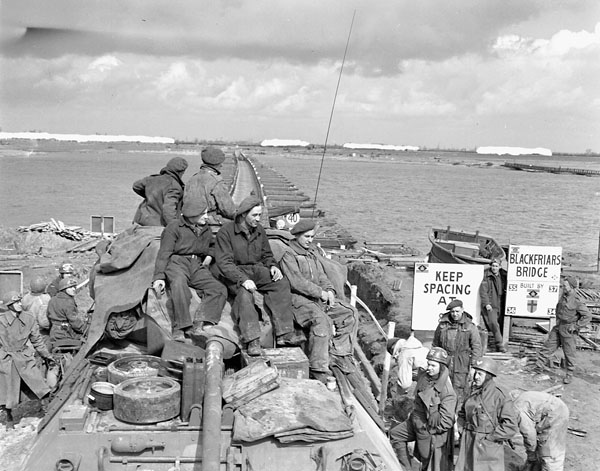Henry (“Harry”) Duncan Graham Crerar, PC, CH, CB, DSO, CD, artillery officer, general (born 28 April 1888 in Hamilton, ON; died 1 April 1965 in Ottawa, ON). Commissioned in 1910, Crerar was a career army officer who served in both world wars. During the Second World War, he rose through a series of command and staff positions to lead First Canadian Army, the largest formation ever fielded by Canada. Crerar is widely considered an excellent staff officer but an average field commander.

Early Life and Education
Harry Crerar was born into the upper middle-class family of Peter Duncan Crerar and Marion Elizabeth Stinson. He entered Toronto’s Upper Canada College in 1899 and graduated in 1904. Two years later, Crerar entered the Royal Military College of Canada (RMC) in Kingston, Ontario.
After graduation, Crerar took a job with the Canadian Tungsten Lamp Company of Hamilton and joined the city’s 4th (Hamilton) Field Battery as a lieutenant. He attended local training and summer camps in Petawawa. Crerar was promoted captain in 1911 and moved to Toronto in 1912, where he took a management position with Ontario Hydro.
First World War
When the First World War broke out in August 1914, Harry Crerar and many of his battery immediately volunteered for the Canadian Expeditionary Force (CEF), which concentrated at a new camp at Valcartier, near Quebec City. The CEF sailed to Britain in early October.
In February 1915, Crerar and his battery deployed to Belgium with the Canadian Division. The Second Battle of Ypres in April, which saw more than 6,000 Canadian casualties, was his baptism of fire. Crerar was gassed during the battle; coupled with widespread carnage and the loss of many friends, the experience left an indelible mark on him. It caused him to have an enduring hatred of Germany, so much so that he would not meet any German commanders at the end of the Second World War, forcing them instead to surrender to his subordinates.
In August 1915, Crerar was attached to the divisional general staff for a month. On completion, he returned to his battery as a major and its commanding officer. Crerar remained with the battery until the Battle of Vimy Ridge in April 1917, when he was made an acting lieutenant-colonel and appointed as temporary commander of the 3rd Brigade, Canadian Field Artillery.
After a seven-week course at the British Army Staff College in July 1917, Crerar was made brigade major of the newly established 5th Canadian Divisional Artillery. He returned to the front in September. Crerar moved to Canadian Corps Headquarters in June 1918 and quickly became the key artillery staff officer there.
Crerar’s performance at corps headquarters earned him high praise and promotion to lieutenant-colonel. On 10 November, just before the war ended, he replaced Lieutenant-Colonel Andrew McNaughton as the corps counter-battery officer. A close relationship had developed between the two men, and McNaughton became Crerar’s mentor.
Interwar Years
After the war, Harry Crerar joined the Permanent Force, and in March 1920 he was appointed as an artillery staff officer in Ottawa. In late 1922, he was selected as one of two Canadians to attend the two-year-long British Army Staff College course (the other Canadian was future governor general Georges-Philéas Vanier). Crerar was accompanied by his family.
After graduation in 1924, Crerar accepted an appointment at the British War Office in the military operations section. He returned to Canada hoping for a position on the general staff in Ottawa, but there was no vacancy. Instead, he was given command of B Battery, Royal Canadian Horse Artillery, in Kingston. Shortly afterward, he was named professor of tactics at RMC, effective January 1928.
Crerar felt the appointment was a demotion. He wrote several letters protesting what he saw as a slight on his abilities but was assured such was not the case. Satisfied, he settled into college life as a lecturer. In early 1929, McNaughton became chief of the general staff and made Crerar a senior staff officer in the directorate of military operations and intelligence.
In 1934, Crerar returned to Britain to attend the year-long course at London’s prestigious Imperial Defence College. Back in Canada in early 1935, he became director of military operations and intelligence, a key post that he held until 1938. In this appointment, Crerar was responsible for producing the plans that expanded the army during the coming war.
In August 1938, Crerar was appointed commandant of RMC, which brought promotion to temporary brigadier after two decades as a lieutenant-colonel. He spent several days a week in Ottawa, where he continued to work on defence preparations for war.

Second World War
In September 1939, Harry Crerar was posted to Canadian Military Headquarters in London. In July 1940, he returned to Ottawa as the vice-chief of the general staff, the same month as the incumbent chief of the general staff retired, elevating Crerar to the top position. He oversaw the initial expansion of the army to a corps and laid the groundwork for further growth. He also increased recruit training from 30 days to four months.
One of Crerar’s controversial decisions was his support for sending two infantry battalions to the British garrison in Hong Kong. In August 1941, the outgoing commander of the British garrison in Hong Kong, Major-General Arthur Grasett, returned to Britain via Canada. The Canadian-born Grasett stopped in Ottawa to see Crerar, an old friend from their days together at RMC. Grasett held a low opinion of Japanese fighting abilities and told Crerar the addition of two battalions to the four already in Hong Kong would make it strong enough to withstand a Japanese attack.
In Britain, Grasett suggested to military authorities that Canada might provide troops to Hong Kong. A formal request to Canada followed in September, which Crerar supported. All 1,975 Canadians were either killed or captured in the Japanese attack in December 1941, the same month Crerar returned to Britain. He was exonerated, however, by the Royal Commission that inquired into the disaster.
In Britain, Crerar was promoted lieutenant-general and appointed acting commander of I Canadian Corps on 23 December. His appointment was confirmed in April, while McNaughton, his predecessor as corps commander, stood up First Canadian Army.
Operational Experience and the Dieppe Raid
As commander, Harry Crerar instituted changes to improve the corps. He made training more realistic, replaced ineffective officers and sought opportunities for operational experience for his soldiers and himself.
Crerar wanted this combat experience, since many men had been in Britain for almost three years without being in battle. He also saw opportunities for combat as a way to sustain morale among his soldiers, ensure Canadians at home were kept aware of their army overseas and fulfil the country’s desire for Canadian troops to get into the action.
Crerar’s initiatives led to another debacle for the Canadian army when he supported the disastrous Dieppe Raid of 19 August 1942. The operation by 2nd Canadian Infantry Division, along with British commandos, resulted in more than 3,350 Canadians being killed, wounded or captured. Again, however, Crerar managed to escape any blame.
Italian Campaign
Crerar believed Canadian soldiers needed experience in an active theatre of war. This was in direct opposition to his longtime mentor and superior, McNaughton, who wanted Canadian troops to fight as one. Crerar then became involved in a campaign to have McNaughton removed.
McNaughton agreed to send 1st Canadian Infantry Division and 1st Canadian Armoured Brigade to the Mediterranean for the Allied invasion of Sicily in July 1943, but only after he received assurances they would be returned for the main invasion of Europe. When the decision was made to send I Canadian Corps Headquarters and 5th Canadian Armoured Division to Italy, McNaughton resigned. (See Canada and the Italian Campaign.)
McNaughton was not the only one who did not want additional troops in the Mediterranean theatre. Neither the Americans nor the British wanted another corps headquarters and would have preferred an infantry division to an armoured one in the mountainous terrain of the Italian mainland. Crerar arrived in Italy on 29 October 1943, but it took until 1 February 1944 before I Corps became fully operational. He left Italy on 4 March, never having led the corps into battle.

Normandy Campaign and Relations with Montgomery
Back in Britain, Crerar took over First Canadian Army on 20 March to prepare it for the Normandy invasion. His superior was General Bernard Montgomery, commander of 21st Army Group. Crerar’s insistence on Canadian autonomy created difficulties with Montgomery, who was already concerned about Crerar’s lack of command experience.
Additionally, Montgomery’s attempts to treat Canadian formations the same as British ones and use them separate from First Canadian Army were rebuffed by Crerar. Relations between the two worsened. Throughout the spring of 1944, Montgomery tried to have Crerar replaced; he had long preferred the commander of II Canadian Corps, Lieutenant-General Guy Simonds.
D-Day was an outstanding success, but the lengthy campaign to break out of the bridgeheads proceeded much slower than Montgomery wanted. On 23 July, First Canadian Army became operational in Normandy, but Crerar had a limited role as Montgomery dealt directly with Simonds and other subordinate formation commanders.
On 1 September, Montgomery was promoted field marshal and remained critical of Crerar and his headquarters during the Allied pursuit across northern France and into Belgium. Yet many of the problems were caused by Montgomery, who assigned the capture of major English Channel ports to Crerar while still insisting First Canadian Army maintain a steady advance with the rest of the Allies. It was too much for the Canadians, who were already suffering from a shortage of infantry reinforcements.
Matters came to a head in Belgium. Montgomery was focused on Operation Market Garden, a narrow thrust to capture key bridges, when he finally realized the long-overdue opening of the port of Antwerp was key to the Allies’ continued advance. He assigned the mission to First Canadian Army.
Meanwhile, Crerar was suffering from a long bout of dysentery, and doctors ordered him to Britain for treatment. He left on 26 September, and Simonds temporarily replaced him. Simonds successfully opened the long approach to Antwerp along the German-held Scheldt River.
Montgomery attempted to prevent Crerar’s return to command; Crerar himself realized it was preferable to leave Simonds as acting commander until the end of the Scheldt Campaign and delayed his return until November. Crerar’s promotion to general on 16 November irritated Montgomery, but the decision was purely a Canadian one.
Rhineland and Liberation of the Netherlands
Montgomery assigned the task of clearing the Rhineland to First Canadian Army. The operation began on 8 February 1945 and quickly became a costly infantry task but was ultimately successful. By 10 March, the Allies had reached the Rhine, crossed it and continued their advance. Crerar had handled his forces well in what was probably his finest performance as a senior commander. General Dwight D. Eisenhower, Supreme Allied Commander in Europe, sent him a congratulatory letter.
First Canadian Army’s final operations were the liberation of the Netherlands and the feeding of its starving people. In March, I Canadian Corps arrived from Italy, which reunited all Canadian army units in Europe. When Germany surrendered on 5 May, Montgomery sent Crerar a letter of appreciation.
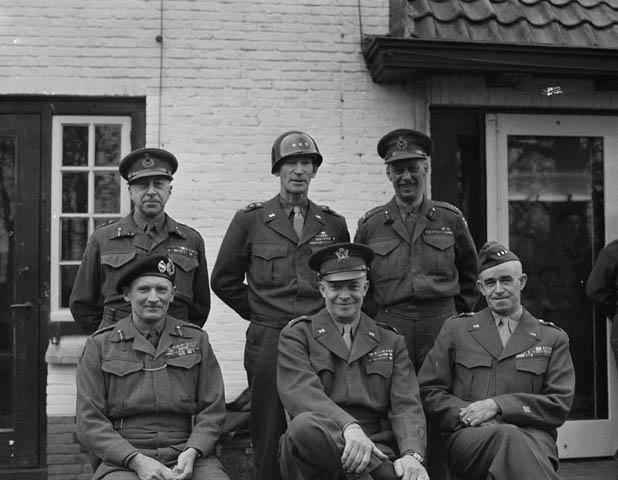
Post-Second World War
When the war ended, Harry Crerar returned to Canada in August and retired the next year to live in Ottawa. He faded from the public consciousness almost immediately, for which he was partly responsible, since he declined offers for senior civilian posts.
During the late 1940s, the government sent Crerar on diplomatic missions, including to Hong Kong, China and Japan. He tried, but failed, to gain an appointment to the Senate. Crerar largely withdrew from public life, although he felt he should be consulted on larger national issues. He continued to give speeches, many of which favoured conscription and military education — subjects which were out of step with a public weary of war.
Crerar suffered from poor health during the last decade of his life and died in relative obscurity.
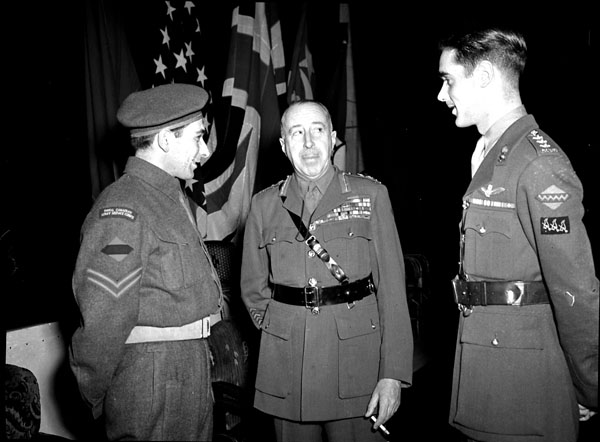

 Share on Facebook
Share on Facebook Share on X
Share on X Share by Email
Share by Email Share on Google Classroom
Share on Google Classroom
